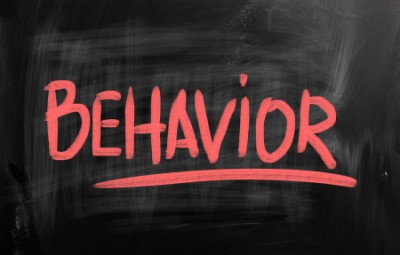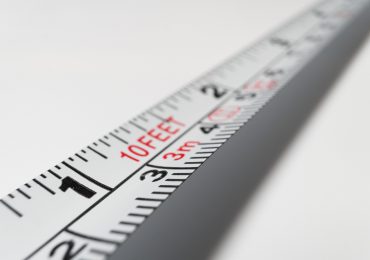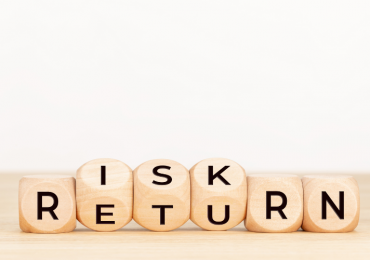By Jack Forehand (@practicalquant)

There are so many biases that can hurt your returns in investing that it is hard to keep track of them. There is also no shortage of advice being given on how to recognize these biases and combat them. This advice would lead you to believe that if you just did certain things, you could escape their impact and prevent them from hurting you.
There is one major problem with this advice, though. It just isn’t true.
It is easy to judge other investors when they make mistakes. It is easy to look at the guy who sold at the bottom in 2008 and never got back in and pick apart the decision-making process that caused his error. It is easy to feel bad for the investor who rides the losing position all the way to zero, missing many chances to sell along the way. It is also easy to judge the guy who predicts future market outcomes with certainty only to be proved completely wrong. It is easy to judge these people because we think the biases that caused them to make those decisions don’t apply to us. We think we are somehow immune to them.
If there is one thing that every investor should know about the impact of biases in investing it is this: they affect everyone.
They affect legendary investor Jim O‘Shaughnessy, who often talks about how he goes out of his way to avoid making decisions by using a rules based approach. They affect behavioral psychologist Dr. Daniel Crosby, who despite spending his career researching this stuff and writing the best book I have read of the topic, The Behavioral Investor, openly accepts that he will never defeat his own biases. And if they affect them, they certainly affect you and me.
So if you want to eliminate the impact of your biases on your investment decision making, the first thing to understand is that you are fighting a battle you are guaranteed to lose. The better approach is to accept that your biases will always affect you and put systems in place to minimize their impact. But in order to minimize them, you need to know what they are. I can’t cover them all here because there are so many, but here are some of the major biases that are the most destructive and how you can try to reduce their impact.
[1] Hindsight Bias
I don’t know if you know this about me, but I predicted the 2008 bear market. Saw it coming from a mile away. It was obvious that the housing market was a ticking time bomb. With people who should never been approved to buy one house buying three, and Wall Street packaging it all up into securities that were inevitably going to explode, it couldn’t have been more obvious to me that massive problems were on the horizon. It is hard for me to believe that everyone didn’t see the problems like I did.
Of course, everything I wrote above is completely false. I had no idea the Financial Crisis was coming. My investment portfolio went down 50% just like everyone else’s. But it is really easy for all of us to look back after the fact and to think that things were obvious at the time that were actually far from it. This is called hindsight bias and it can be very dangerous because if we believe we could have predicted the past, it leads us to believe we can also predict the future. And that leads to poor decision making. So next time you think you knew what was going to happen, put yourself back into the mindset you were in at the time and try to forget that you now know the eventual outcome. Then ask yourself if you really could have predicted what happened. If you do that, you will probably find that what you think is obvious now wasn’t so obvious at the time.
[2] Overconfidence
This goes hand in hand with the previous one because the past can in many ways mislead us into thinking we can predict the future, but it also appears in many other situations. We all tend to think we can predict a variety of things that we actually can’t. We think we can predict the short-term movements of the market. We think we can predict the economy. We even think we can predict which individual stocks are going to do well going forward. And if we do predict one of things correctly once, then this issue really gets out of control because we think we can do it again. To illustrate why overconfidence can be such an issue, pretend for a second that what I said above about predicting the 2008 bear market was true. If I did that and saved myself from a 50% decline, I would think I am invincible. I would think I can not only predict the next market decline, but also predict a bunch of other things between now and then. This would inevitably lead to a bunch of mistakes that would likely offset any benefit I got from predicting the bear market in the first place. But don’t take my word for it. Think about all the prominent investors who did successfully call the 2008 bear market and take a look at what has happened since. You will find the majority have seen their returns trail the market badly. I can guarantee that overconfidence played a big role in this.
So next time you make a decision with your portfolio based on your prediction of something that will happen in the future, ask yourself whether you can really predict that outcome or whether overconfidence may be playing a role in that decision. Taking a step back and going through that process may help prevent a major mistake.
[3] Confirmation Bias
If you read my articles regularly, you probably already know that I am a big believer in value investing. That belief leads me to surround myself with other people who feel the same way. If you look at the blogs I read and the people I follow on Twitter, you will find many value investors who agree with my way of thinking. That is very dangerous, though, because it could lead me to miss something. If value investing were to become permanently impaired, I may not realize it until it is too late.
I have tried to combat this by reading more people who disagree with me, and I even wrote an article taking the other side of the argument. But even after all of that I am still a believer in value, so it is impossible to say whether any of it worked. It is impossible for me to definitively say whether I believe in value because it is the correct thing to do given the facts or whether my confirmation bias is at work here.
And everyone has their own version of value investing. Investing is a world where almost nothing in certain, and as a result, there is almost always another side. Doing everything you can to understand that other side and the arguments in support of it is key to combatting confirmation bias. Even if at the end of the day you don’t change your opinion, it will make you a more informed investor.
[4] Recency Bias
Market volatility was historically low in 2017. We all got used to the S&P 500 going up a little every day and those small gains compounding into much larger gains over time. There were no corrections. In fact, there were only a few minor declines. That lack of volatility lulled us all into believing that what happened in 2017 was the new normal. We expected the low volatility to continue. This caused many investors to be shocked by the market correction and rapid rise in volatility in early 2018. But if you look at market history, what happened in early 2018 was actually the normal occurrence, and what happened in 2017 was the outlier. 2017 was by some measures the least volatile year in market history, and corrections like the one that happened in early 2018 happen all the time. The fact that 2018 blindsided many investors is a perfect example of recency bias.
Recency bias is the tendency to think that what has happened recently will continue forever. It can be a very dangerous bias because it can lull investors into thinking that unlikely outcomes are much more possible than they are. And it doesn’t just apply to things that have happened in the past year. For example, when many investors look at what the next bear market might look like, they tend to look at the 2008 and 2000 bear markets, both of which saw stocks fall over 40%. The reality, however, is that most bear markets end with losses far less than that. An investor only looking at the two most recent bear markets would likely position their portfolios for a decline far larger than what might actually come.
So how do you combat this bias? The best way I have seen is to use base rates. Base rates judge the possibility of anything occurring based on what actually happened in the past. If you looked at base rates following 2017, you would have seen that the odds of that kind of volatility occurring in any given year were less than 5%. That would tell you that it likely wasn’t going to continue into 2018. If you use base rates to look at what the next bear market might look like, they will tell you a decline less than 30% is far more likely than a decline greater than 40%. Base rates obviously won’t tell you what is going to happen, but they will help you to put recent events in a better historical context.
Managing Your Biases
So what is the solution to all of this? The full answer would require another article, but to provide a brief summary, I think three things can be very helpful.
[1] Acknowledge The Problem
The first step to fixing any problem is recognizing it exists. And in this case it is important to understand that your biases are something that can be managed, but will never be fixed.
[2] Automate Everything You Can
The best way to ensure that your biases don’t cause you to make poor decisions is to setup a system where you make as few decisions as possible. For example, if you have a lump sum of money to invest in the market, it is probably best to either invest it all right away or setup an automated system to deploy it over time. If you try to time your entry based on day to day market movements, the odds of your emotions getting the best of you and causing you to make poor decisions are very high.
[3] Designate Someone to Talk You Off the Ledge
The most damaging emotional decisions often come during the most stressful times. Selling at the bottom of a bear market can cause damage to your long-term returns that you may never be able to recover from. For times like these, I have found it is helpful to have someone you can call who can provide some perspective and prevent you from making a major mistake. A good financial advisor is a great option, but it doesn’t have be a professional. Anyone who can offer long-term perspective during times of panic can be a huge asset.
In the end, our biases are part of who we are. We are stuck with them forever. Human beings are engineered to be good at many things. Investing just isn’t one of them. If you can recognize that fact and implement some simple systems to manage your biases, it will greatly increase your chances of reaching your investing goals.
Photo: Copyright: krasimiranevenova / 123RF Stock Photo

Jack Forehand is Co-Founder and President at Validea Capital. He is also a partner at Validea.com and co-authored “The Guru Investor: How to Beat the Market Using History’s Best Investment Strategies”. Jack holds the Chartered Financial Analyst designation from the CFA Institute. Follow him on Twitter at @practicalquant.








